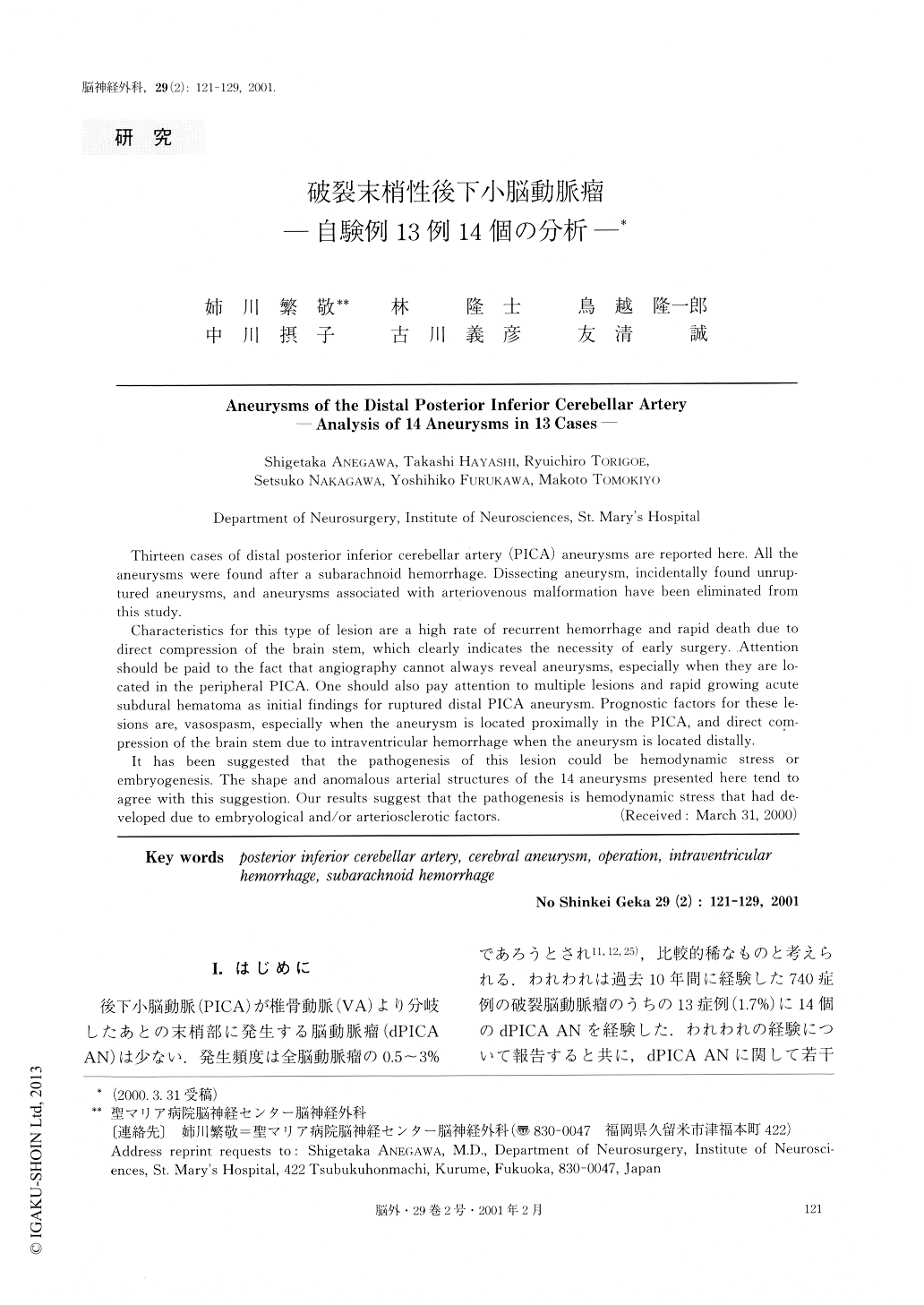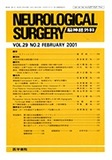Japanese
English
- 有料閲覧
- Abstract 文献概要
- 1ページ目 Look Inside
I.はじめに
後下小脳動脈(PICA)が椎骨動脈(VA)より分岐したあとの末梢部に発生する脳動脈瘤(dPICAAN)は少ない.発生頻度は全脳動脈瘤の0.5〜3%であろうとされ11,12,25),比較的稀なものと考えられる.われわれは過去10年間に経験した740症例の破裂脳動脈瘤のうちの13症例(1.7%)に14個のdPICA ANを経験した.われわれの経験について報告すると共に,dPICA ANに関して若干の検討を加えたので報告する.
Thirteen cases of distal posterior inferior cerebellar artery (PICA) aneurysms are reported here. All theaneurysms were found after a subarachnoid hemorrhage. Dissecting aneurysm, incidentally found unrup-tured aneurysms, and aneurysms associated with arteriovenous malformation have been eliminated fromthis study.
Characteristics for this type of lesion are a high rate of recurrent hemorrhage and rapid death due todirect compression of the brain stem, which clearly indicates the necessity of early surgery. Attentionshould be paid to the fact that angiography cannot always reveal aneurysms, especially when they are lo-cated in the peripheral PICA. One should also pay attention to multiple lesions and rapid growing acutesubdural hematoma as initial findings for ruptured distal PICA aneurysm. Prognostic factors for these le-sions are, vasospasm, especially when the aneurysm is located proximally in the PICA, and direct com-pression of the brain stem due to intraventricular hemorrhage when the aneurysm is located distally.
It has been suggested that the pathogenesis of this lesion could be hemodynamic stress orembryogenesis. The shape and anomalous arterial structures of the 14 aneurysms presented here tend toagree with this suggestion. Our results suggest that the pathogenesis is hemodynamic stress that had de-veloped due to embryological and/or arteriosclerotic factors.

Copyright © 2001, Igaku-Shoin Ltd. All rights reserved.


